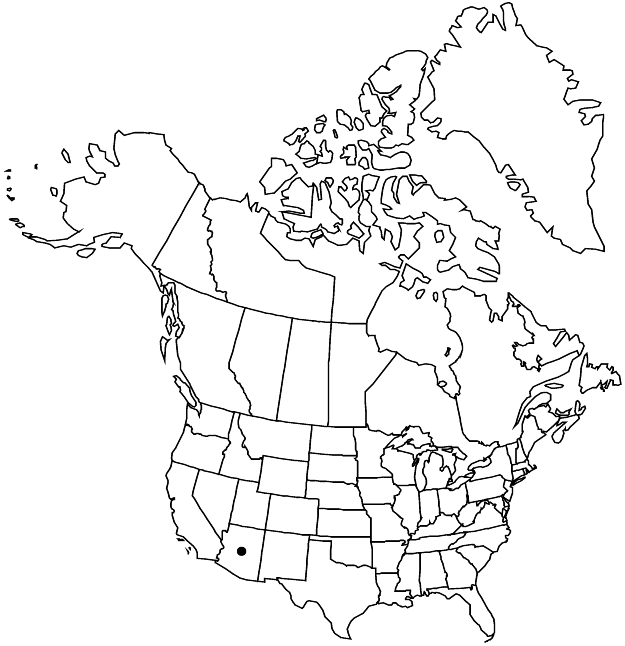Eriogonum umbellatum var. mohavense
Phytologia 86: 149. 2004.
Herbs, spreading mats, 0.5–2 × 1–3 dm. Aerial flowering-stems spreading to erect, (0.3–) 0.5–1.5 (–2) dm, floccose, without one or more leaflike bracts ca. midlength. Leaves mostly in tight rosettes; blade narrowly elliptic, 0.7–2.5 × 0.3–1 cm, thinly floccose on both surfaces or glabrous adaxially, margins plane. Inflorescences umbellate; branches 2.5–8 cm, thinly floccose or glabrous, without a whorl of bracts ca. midlength; involucral tubes 2–3 mm, lobes 1.5–3 mm. Flowers 3–7 mm; perianth bright-yellow.
Phenology: Flowering May–Jun.
Habitat: Sandy to gravelly flats and slopes, sagebrush communities, oak, pinyon-juniper, and montane conifer woodlands
Elevation: 1200-1600 m
Distribution

Ariz.
Discussion
Variety mohavense is known only from the Black Rock and Wolf Hole mountains area on the Arizona Strip of Mohave County, Arizona. The rays or branchlets of the inflorescences are rather long (2.5–8 cm). The taxon is related to the much more widely distributed, late-season-flowering var. subaridum found to the north and west.
Selected References
None.
Lower Taxa
"dm" is not declared as a valid unit of measurement for this property."dm" is not declared as a valid unit of measurement for this property."dm" is not declared as a valid unit of measurement for this property."dm" is not declared as a valid unit of measurement for this property."dm" is not declared as a valid unit of measurement for this property.